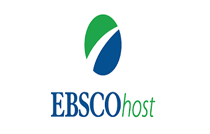Mansoura Veterinary Medical Journal
Document Type
Original Article
Keywords
fipronil; neuroinflammation; Oxidative stress; Apoptosis; Nigella sativa; Nrf-2/ Nf-κB
Abstract
Background: Fipronil (FPN) a phenyl pyrazole insecticide, is widely applied in agriculture and veterinary products. However, its use is accompanied by neurotoxic effects. Hence, the current study was designed to assess the possible neuroprotective action of Nigella sativa extract (NS) against FPN-induced neurobehavioral toxicity in Wister male albino rats.
Methods: Thirty male albino rat weighing one hundred fifty to one hundred eighty grams. Animals were given FPN (12.6 milligrams per Bodyweight) orally or pre-treated using NS (100 and 200 mg/kg BW, respectively). The research study had been carried out within a four-week period.
Results: The findings demonstrated considerable promotions in neurobehavior in FPN-intoxicated rats and pre-treated with FPN in the open field, dark light test, and elevated plus-maze test. In addition, pre-treatment with NS lead to valuable rise in gamma-aminobutyric acid (GABA) together with substantial declines in malondialdehyde (MDA). Conversely, NS induced significant increases in catalase (CAT), super oxide dismutase (SOD), glutathione peroxidase (GSH-Px), besides Nrf2 upregulation. Marked decreases in tumor necrosis factor-alpha (TNF- α) and nuclear factor Kappa-B (NF-κB) were observed following NS treatment. These findings were confirmed by histopathologic imaging of brain cortex. Also, caspase-3 immunostaining was noticeable negative in the NS-treated groups.
Conclusions: Our findings suggest that, NS, in a dose-dependent manner, can be considered as a potent neuroprotective agent via its anti-inflammatory, antioxidant and anti-apoptotic activities.
How to Cite This Article
Maher, Naglaa Mostafa; Habotta, Ola A.; and Sleem, Fathy
(2024)
"Antioxidant, anti-apoptotic, and anti-inflammatory potential of Nigella sativa extract orchestrates its role against fipronil-induced toxicity in rats’ brain,"
Mansoura Veterinary Medical Journal: Vol. 25:
Iss.
3, Article 3.
DOI: https://doi.org/10.35943/2682-2512.1241
Receive Date
Mar 13, 2024
Accept Date
May 31, 2024
Publication Date
2024






